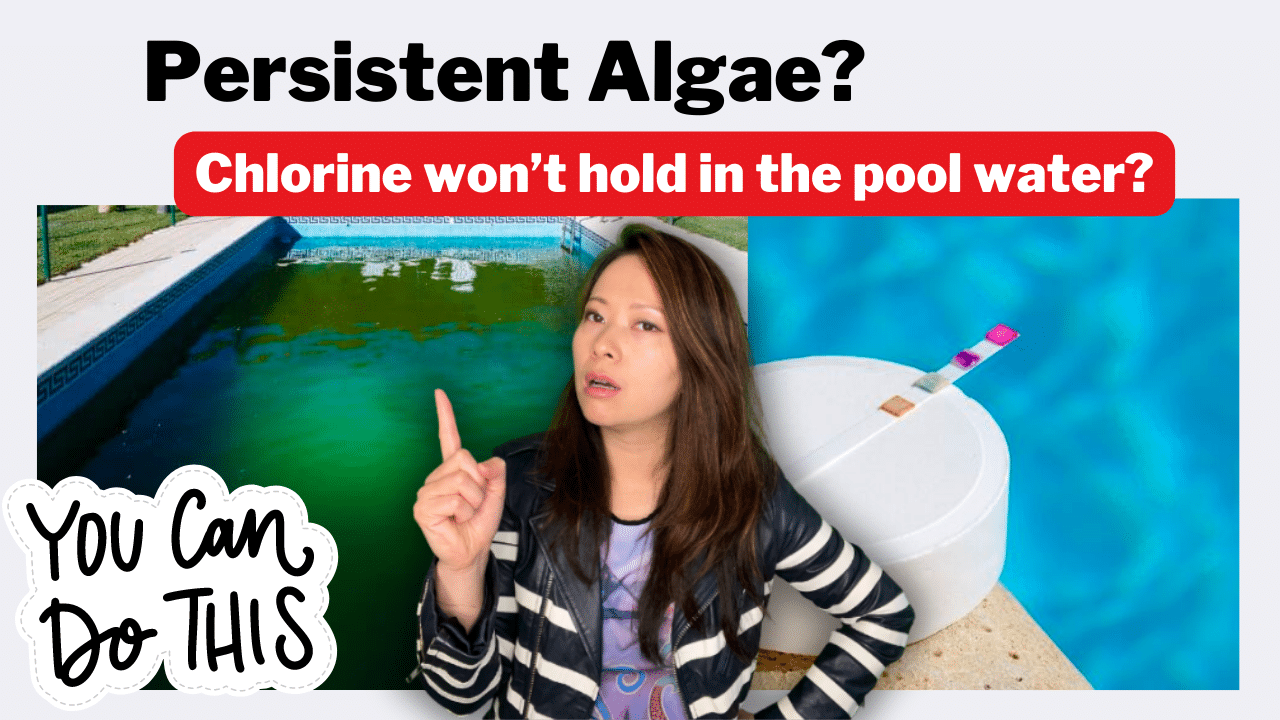Persistent Algae? Chlorine won’t hold in the pool water? Here’s why.
In the summer of 2023, many pool owners in the Northeast of the United States encountered unexpected problems: persistent algae (the greenish cloud) in the pool, or chlorine won’t hold in the water as shown in the test strips. Here’s why and what you can do.
The answer to this very irritating problem is phosphates.
I recently had a conversation with Joe Jepsen, a pool specialist, who gave us insights into the issue.
The issue with excess phosphates in the water supply
Joe explained that phosphates are nutrients for plants that are now found in our water supply. Phosphates have many benefits, commonly found in dirt and fertilizers, and have started to appear more frequently in flavored drinks. However, phosphates can also encourage rapid algae growth in pools.
Joe recalls a pool he serviced recently had phosphate levels exceeding 2000 parts per billion (ppb) in their tap water, significantly higher than the accepted high limit in pools of 250-500 ppb. In some cases, the levels in pools were 20 times that amount!
What are phosphates used for?
Public water systems (PWSs) commonly add phosphates to drinking water to prevent the release of metals in drinking water. Orthophosphate is most commonly used for lead and copper control. Polyphosphates sequester iron and manganese to prevent discolored water but are not effective to control lead and copper.
How to eliminate phosphates in pool water (Persistent Algae)
1. Choosing the right pool chemicals
Joey and his team are tirelessly trying to find ways to eliminate phosphates consistently. One method he suggested involves treating the water with standard pool chemicals such as aluminum sulfate, a substance that is non-toxic when in water and binds to phosphates, dropping them to the bottom of the pool and allowing them.
For salt pools, the process gets even trickier. Salt generators produce chlorine based on water passing through metal fins in a salt cell. The issue here is that when the phosphates are removed from the water, they attach to these metal fins and essentially render them non-functional.
Another effective chemical, lanthanum chloride, is used to eliminate phosphates from pool water.
But hey, if you are like me who’s not comfortable doing this myself, it’s best to bring a water sample to a local pool store to figure out exactly what you need.
2. Pre-filter attachment for your pool water
Aside from treating the water with chemicals, other solutions to tackle this issue involve maintaining balanced water chemistry with proper calcium, pH and alkalinity levels, and a consistent amount of chlorine. Some people have started to use pre-filters attached to their hoses, which filter out excess phosphates before the water even enters the pool.
When asked about these hose filters, Joe told us that they are often called ‘Garden Hose Pre-Filters.’ One popular brand, Bobby, does a great job of filtering out metals and sediments. Another cheaper alternative on Amazon is this.
3. Know when to hire a professional
As for when pool owners should hire a professional, Joe advised getting the water tested by a pool store or an expert, even if they believe they can handle it themselves. The biggest sign of a phosphate problem is the inability to maintain chlorine levels in the pool, even when the stabilizer levels are optimal. Another warning sign is a persistent algae problem that keeps resurfacing.
The phosphate problem may seem overwhelming, but with the help of experts like Joey, solutions are being found. In the meantime, pool owners should remain vigilant about maintaining the right chemical balance and consider using pre-filters to prevent the issue from escalating.
A big thank you to Joe Jepsen!
Joe is not only a talented pool specialist and technician at Heritage Pools in Sutton, Massachusetts but he’s also a talented graphic designer and creative technologist. He loves learning and teaching entrepreneurs and businesses how to leverage AI to work smarter. Got a question about chatGPT, Midjourney, and graphic design? Reach him at https://www.joejepdesign.com/contact

